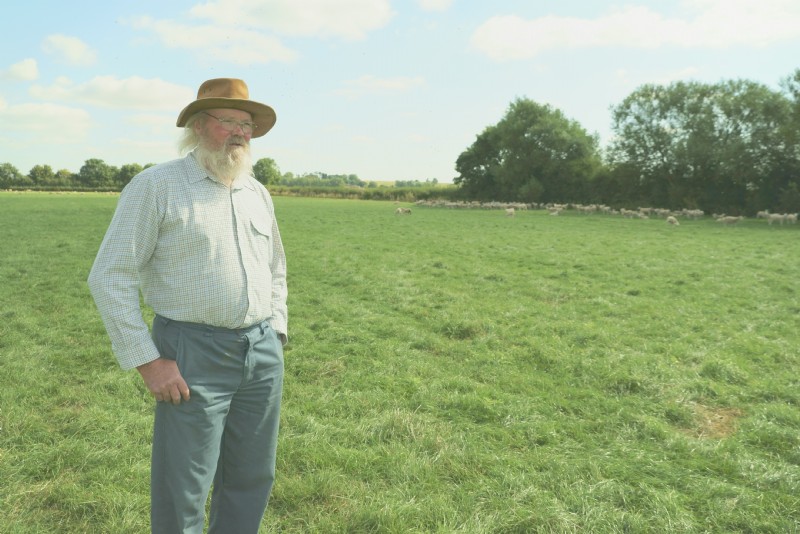

Edward Cook relies purely on bespoke grass mixtures to fatten his lambs throughout the summer, and to produce enough good quality silage to continue fattening sheep and lambs in the wintertime.
Edward has farmed Tudor Farm in the home counties for forty years, but his family have been there for even longer. ‘They got into farming when others were leaving the land in droves during the agricultural revolution in the eighteenth century,’ says Edward, a fourth generation farmer.
A small acreage of his land is now given over to milling wheat, but the majority is used to produce Easy Care sheep for meat. The soil type is heavy blue clay underneath a loamy soil, which means that the land tends to be continually wet. The conditions are right for producing high quantities of grass in a short period, but during winter it’s impossible to keep the sheep on the ground, so substantial quantities of good quality silage are needed to feed them in the shed throughout winter. During a winter of bad weather the sheep may need to be housed for five months when the land is too wet, usually they are in between November and March.
The acreage that’s given over to grass leys is sown with a long term ley with extra clover, and a bit of Timothy in the mix as well.
‘I like to have a good amount of clover in the sward, specifically to fatten lambs, as we find it produces a lot more milk in the ewes and we also get a lot fatter lambs straight off the grass,’ says Mr Cook.
The grazing fields are in a rotation, in line with the three crop rule, so the same fields are not grazed or mown year-on-year. The ley mixture is sown after the winter wheat and then grazed as soon as it’s tall enough. It’s treated with an average of 100 kg /ha of nitrogen with phosphate and potash, according to what soil tests dictate. The ley is managed throughout the period of its life with a mixture of grazing, topping and cutting for silage and hay, depending on how much grass is growing in each year. The sheep are scattered over the whole farm during lambing time and the fields tend to be shut up in May, then mown once for silage, between June and July. This is treated as a second silage cut though in actual fact it’s a first. We get well over ten tons to the acre of good quality silage, which has only been growing for about five weeks.
‘We used to use other grass mixtures, but a few years ago I saw a neighbour’s ley and liked the look of it so asked him where he got it from,’ says Edward. ‘He was told it was from Cotswold Seeds so we swapped to them and have been with them ever since, because of both the quality of the grass and their service. Their grass is better to establish, more persistent and next day delivery is really important for us. As of course is the fact that the mixtures produce very fat lambs and excellent silage.’
‘We find it absolutely ideal for the sheep,’ says Edward.
Date Posted: 16th February 2017



